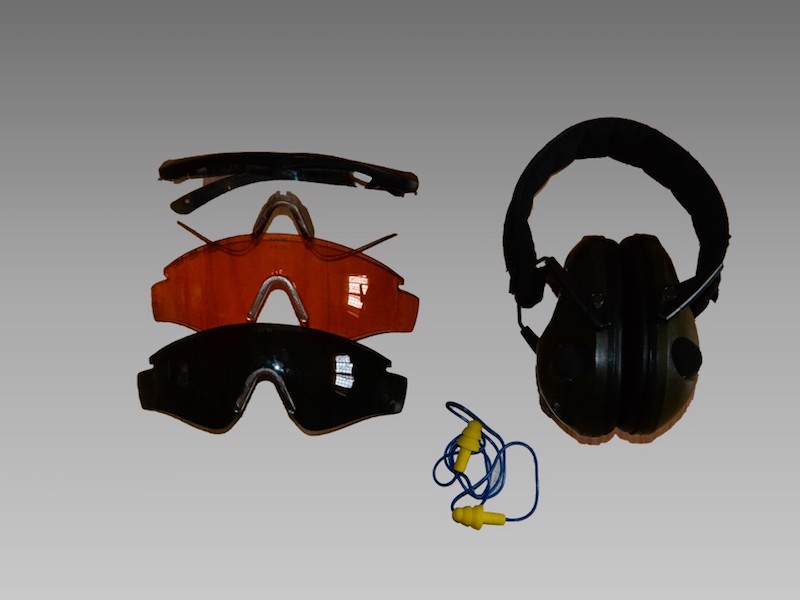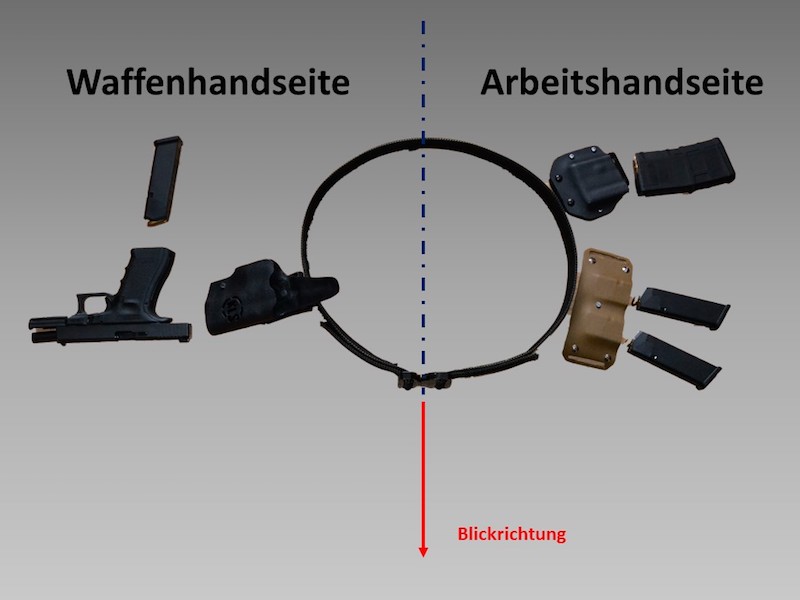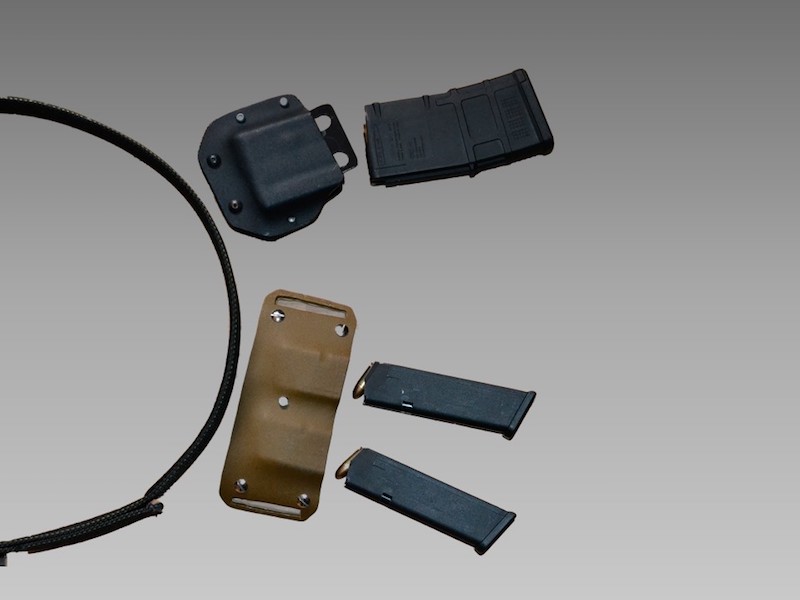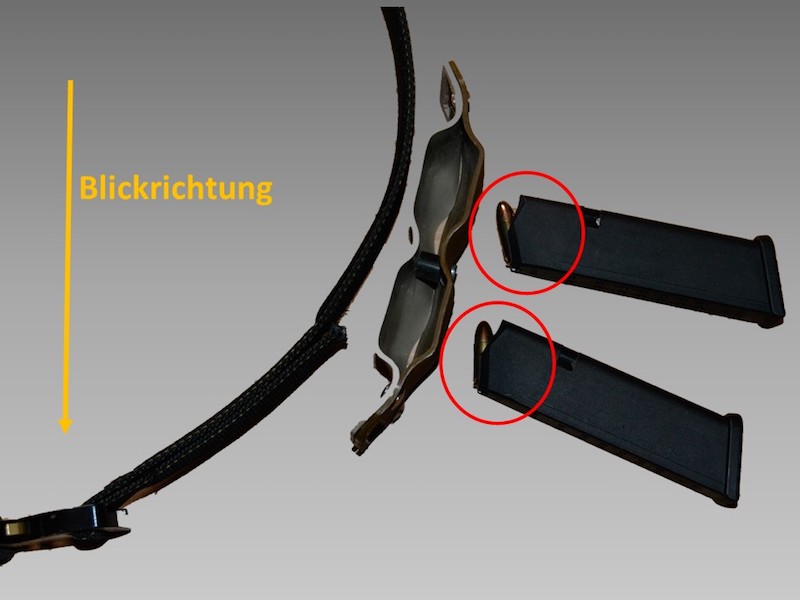Get the weekly SPARTANAT newsletter.
Your bonus: the free E-Book from SPARTANAT.
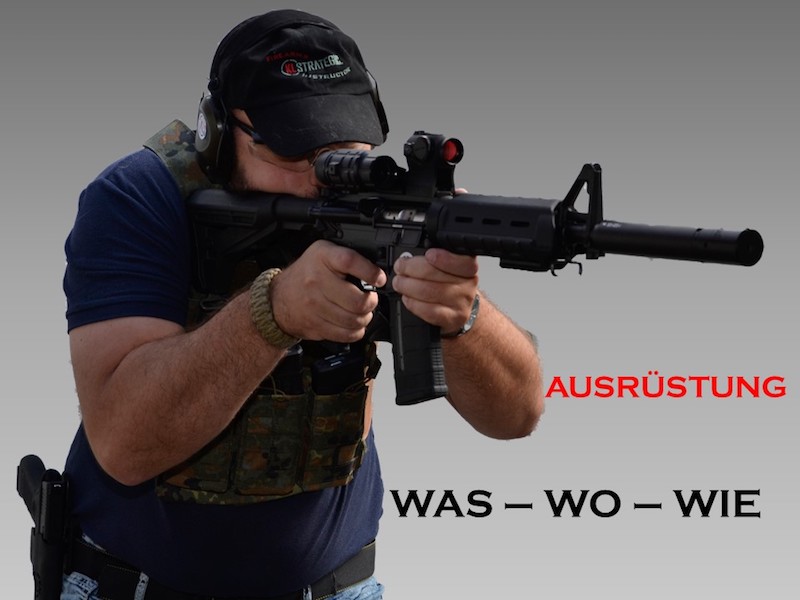
TRAINING WITH KL STRATEGIC (11): ALL ABOUT EQUIPMENT
This text discusses the importance of equipment organization and prioritization in handling firearms. It emphasizes the need for necessity and order, focusing on carrying essential items like ammunition and prioritizing accessibility for efficient operations. Special attention is given to magazine placement and orientation for stress-resistant ammunition management. The text provides detailed insights into arranging equipment for optimal workflow in various settings.
Equipment supports in achieving a goal by keeping necessary items and tools organized and ready for use. The basic elements here are necessity and order. These aspects depend solely on individual characteristics, but follow certain principles. I would like to explain what this means and what these principles are in more detail.
Any form of equipment initially represents an additional but usually necessary burden that needs to be integrated into workflows. The more equipment one carries, the more challenging it becomes to handle it effectively. In stress-resistant firearms handling, this means: If you can't handle the equipment, you can't handle the weapon.
As mentioned earlier, equipment revolves around two core aspects - necessity and order.
Necessity
Handling firearms of any kind is not an action adventure computer game. Available space is limited, and one need not be equipped for all eventualities. For this reason, equipment is tailored to the "mission." This applies to military special forces as well as to the ambitious sports shooter in amateur sports and everyone who falls within this spectrum. Necessity determines the equipment. What one can expect to need is carried in categorized form. The categorization is based on priority.
In the military/agency operational field, this is referred to as 1st, 2nd, and 3rd Line. The basics of this principle can also be applied to all other areas of application.
In terms of stress-resistant firearms handling, I would like to primarily focus the following considerations on the use of a maximum of two weapons (long and short arms). Of course, protective gear stands independently and is unavoidable.
When talking about the use of a firearm, regardless of the environment, the primary necessity is to carry additional ammunition. Subsequently, the following are prioritized:
- Ammunition
- Ammunition
- Ammunition
- ...
- Ammunition
- Attachment possibility for the weapon(s)
In the civilian sector, these are the main essentials. For the hunting sector, one can discuss whether first aid equipment and a knife are useful, but such items can generally be carried in a backpack or bag.
The equipment on the body is limited to what is necessary to fulfill the primary task.
In firearms handling, this means: Effectively and accurately directing shots towards the target.
As mentioned earlier, the main focus is on carrying ammunition, usually in the form of loaded magazines. If you use more than one weapon, the appropriate ammunition must be ready for each weapon. This can get quite tight on the belt. For this reason, effective ammunition management is of essential importance.
Accessibility and prioritization also play a significant role here. If the minimum equipment is supplemented with other necessary items, it must not unnecessarily disrupt or even prevent operations; for example, a shoulder strap of a long gun should not hinder access to magazines. The best example of this is the rifle sling over a backpack; this way, one can be sure to find oneself in a tangle of various straps and loops under stress when trying to quickly remove the backpack to use it, for example, as a rifle rest or simply to gain more freedom of movement quickly.
Order
It is said that "order is half of life." Depending on the field of application, order can mean the entire life. For this reason, one should think carefully about prioritizing and accessing indispensable equipment items in advance.
Let's take the example of the shooting belt:
The shooting belt usually features a holster for the handgun, spare magazine(s) for the handgun, and possibly also for the long gun. An operations belt for, e.g., police also houses handcuffs and non-lethal tools. All these elements should be arranged in a way that not only can they be quickly accessed but also, in stress, one knows where everything is and grabs the right item.
It is undisputed that the gun and, if applicable, the non-lethal tool should be placed on the shooting hand side. Likewise, the magazines should be on the side of the working hand since they are usually grasped with the working hand. So far, so unproblematic. All other equipment follows on according to necessity towards the back.
Now, let's talk about the nuances - keyword: ammunition management.
Handgun magazines are usually positioned first on the side of the working hand, possibly followed by at least one long gun magazine.
When arranging the equipment on the belt, one must consider not only the position but also the orientation to make the workflows economical and efficient.
Another aspect is the prioritization of magazines, i.e., the division between "quick" and "slow" magazines. It has proven effective to number the positions of magazines from the easiest to reach to the most difficult. Position 1 is the fastest magazine used for reloading. This position is not only the quickest and easiest to reach but also provides the shortest path from the magazine holder to the weapon in the working area (see Part 6 of the article series). The magazines that follow towards the back are then numbered 2, 3, ... The higher the number, the slower the magazine is to reach.
Following the fast handgun magazines (Position 1 to max. 3), at least one long gun magazine should be used when utilizing a long gun with the respective magazine.
This magazine is seen as an "emergency magazine" since in dynamic sports environments, usually one magazine is sufficient. In the context of a military or agency operation, the primary weapon's magazines are located in a different position of the equipment, namely on the tactical vest. In these cases, the shooting belt represents the minimally needed equipment to save one's skin.
Following the possibly needed long gun magazines are the slow handgun magazines used for loading and magazine changes (see Part 8).
From these magazines, the positions of the reload magazines are refilled from back to front as soon as time is available. This ensures that Position 1 is always occupied with a full magazine (provided there is enough ammunition). If time permits, ammunition from partially used magazines is consolidated to refill magazines.
Using a drop pouch is always somewhat critical if one cannot effectively handle it. It contains various items, making it practically impossible to differentiate them under stress. Therefore, magazine changes or even reloading from the drop pouch is an absolute no-go.
Besides the division between quick and slow magazines, the orientation of the magazines in the respective pockets/holders is crucial for stress-resistant ammunition management. It is essential that full magazines are always oriented downwards in the pockets/holders, while empty and partially used magazines, if possible, are oriented with the feed lips upwards. This way, one can easily determine by touch alone whether a magazine is full, partially used, or empty. Full magazines are identified by feeling the magazine base. Partially used magazines are identified by feeling the top round, while empty magazines are identified by the empty follower. This arrangement works for magazine pockets but not holders.
In this case, empty magazines are simply no longer with the shooter since they only represent unnecessary burdens in the given situation. Partially used magazines are at most in the gun or in the holders of the slow magazine positions. The full magazines are in the reload positions and ideally in the gun.
The alignment of the magazines in the holders also plays a crucial role in stress-resistant ammunition management.
As mentioned earlier, it is important to know how to grab the magazines under stress to effectively insert them into the gun in a fluid motion. When grabbing the magazines from the outside, the rounds should be oriented towards the front. When grabbing from the inside, the orientation should be towards the back. Similarly, the orientation should be considered when the magazines are not flat against the body but vertical, as commonly seen with many shooting athletes.
The same basic principle always applies: one must be able to work effectively with the equipment and "get it." The worst thing would be if inefficient organization hindered oneself. For example, placing the handgun on the side of the working hand would be detrimental. The so-called "CrossDraw" is only seen in precisely two scenarios:
- In the sitting position (driver, at a table, etc.)
- In Hollywood
Equipment should also not be obstructed by other equipment, such as the previously mentioned sling resting on top of the magazines.
SPARTANAT is the online magazine for Military News, Tactical Life, Gear & Reviews.
Send us your news: [email protected]
Ad
similar
Get the weekly SPARTANAT newsletter.
Your bonus: the free E-Book from SPARTANAT.


